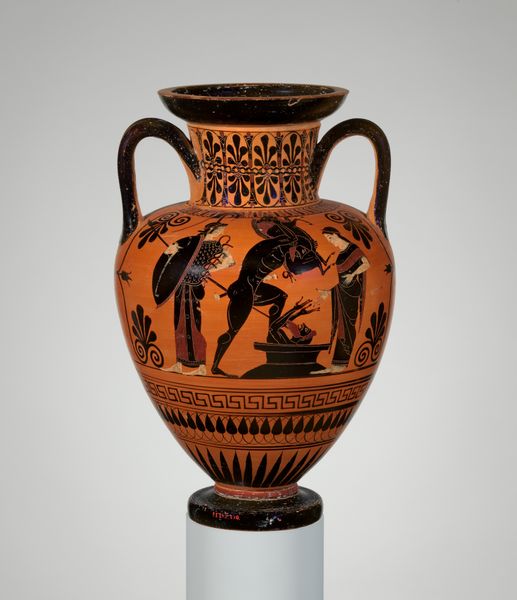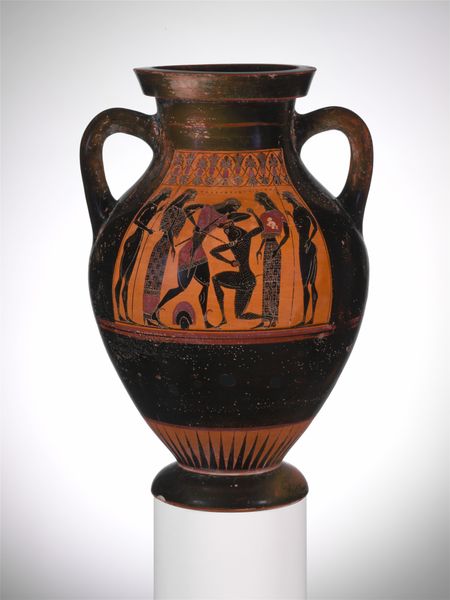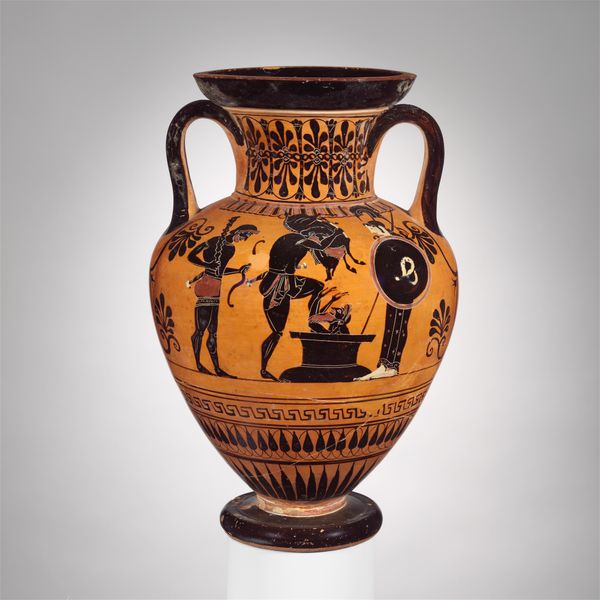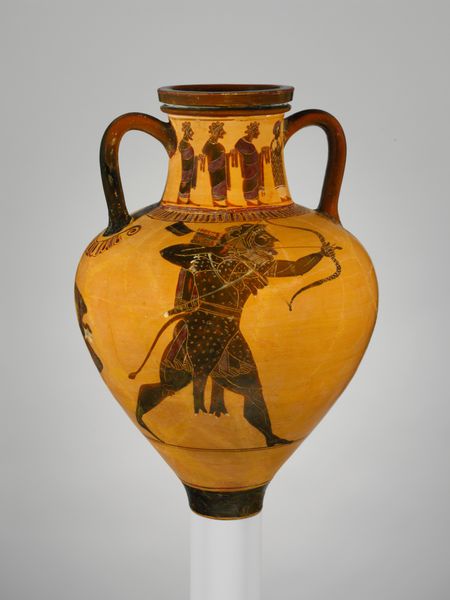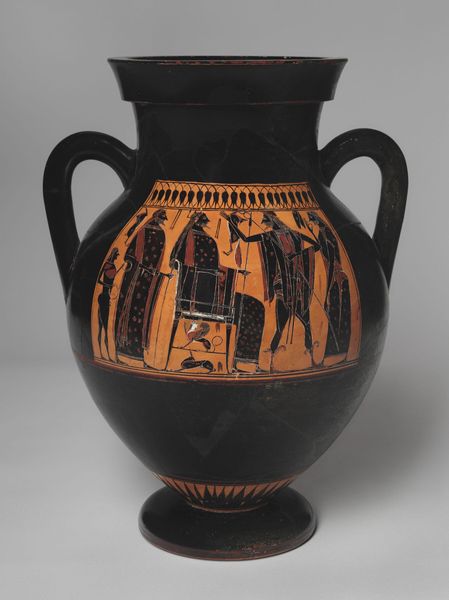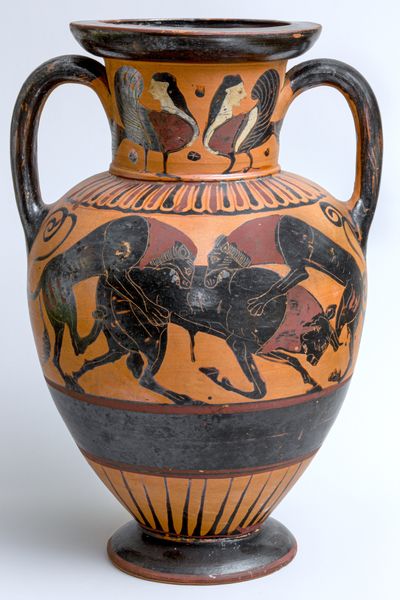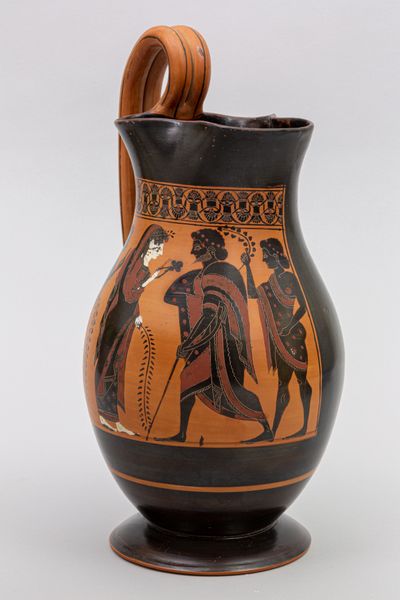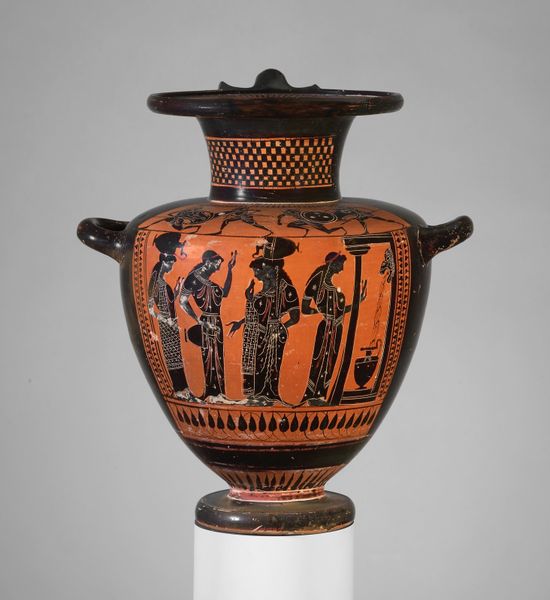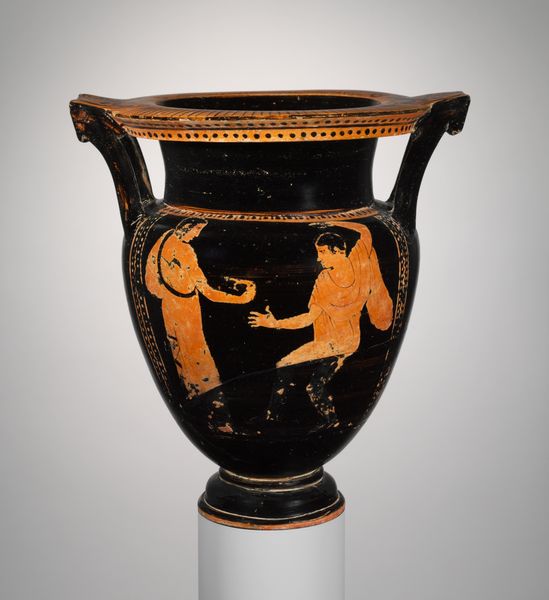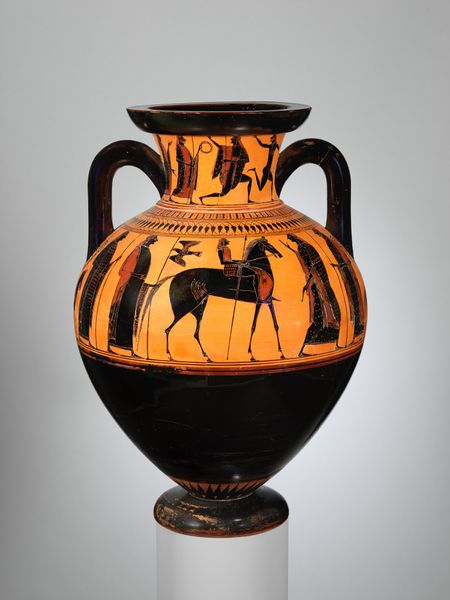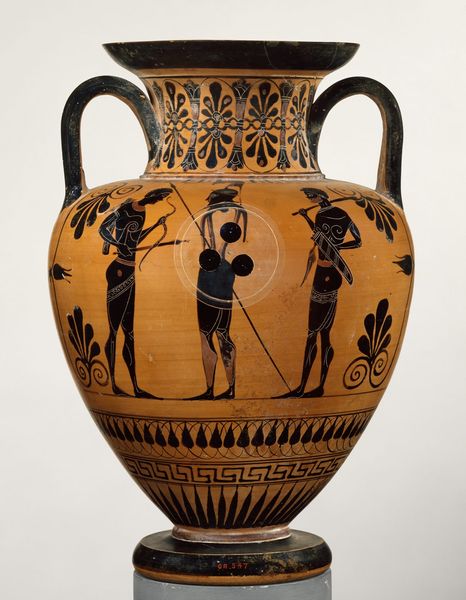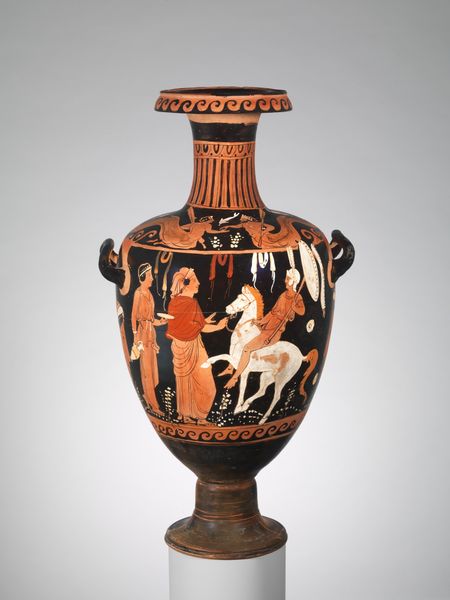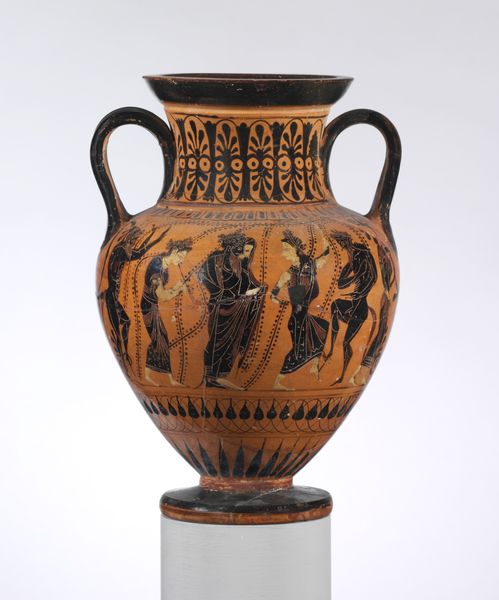
drawing, ceramic, earthenware
#
drawing
#
narrative-art
#
pottery
#
greek-and-roman-art
#
ceramic
#
figuration
#
earthenware
#
ancient-mediterranean
#
ceramic
#
earthenware
Copyright: Public domain
Curator: This is a terracotta amphora, a jar made around 530 BC. What do you make of it? Editor: Immediately, the figures strike me—silhouetted in black against that reddish-orange ground. They’re arranged almost symmetrically, aren’t they? There is a sense of balance and order here. Curator: Yes, but consider also the act being depicted—these figures are weighing something, likely precious materials for trade. The repetitive, almost mechanized action speaks to the labor and economy of the time. The amphora isn’t just an object; it represents a nexus of production, distribution, and consumption in the ancient world. Editor: I see your point. But, structurally, notice how the band of geometric designs near the top mirrors the radial pattern around the base. That framing creates visual harmony. The use of negative space, too, particularly around the figures, contributes to its elegance. It directs the eye. Curator: True, and the choice of earthenware over, say, a more luxurious material speaks to the pottery’s functionality, doesn't it? These amphorae were workhorses, used for storing and transporting goods like wine, oil, or grain, making the vessel and its contents intrinsically linked to daily survival. Editor: Agreed. But it is also skillfully designed, with those gracefully curved handles that emphasize its three-dimensionality. The black glaze is applied so carefully; it's controlled and deliberate. One could even see an interplay of light and shadow as it turns on the wheel, the dark silhouettes set against the bright orange, creating contrast, almost dramatic tension. Curator: It’s fascinating to consider that these shapes and depictions have remained intact for over two thousand years. They are not just aesthetics; they speak to endurance and the values of that society. Even small details, like the repairs or chips, are testament to the amphora's history and its usefulness within its cultural context. Editor: I am drawn to the timeless quality of the figures, poised forever in the act of weighing. Its structure reveals an underlying harmony that I will certainly contemplate long after I have moved on to the next artwork. Curator: And I appreciate how your perspective allows us to value not just what the amphora depicts but the history it embodies.
Comments
No comments
Be the first to comment and join the conversation on the ultimate creative platform.
